Cover
Copyright
Contents
Foreword
Preface
About the Author
1 The Philosophy of Bayesian Inference
1.1 Introduction
1.1.1 The Bayesian State of Mind
1.1.2 Bayesian Inference in Practice
1.1.3 Are Frequentist Methods Incorrect?
1.1.4 A Note on "Big Data"
1.2 Our Bayesian Framework
1.2.1 Example: Mandatory Coin-Flip
1.2.2 Example: Librarian or Farmer?
1.3 Probability Distributions
1.3.1 Discrete Case
1.3.2 Continuous Case
1.3.3 But What Is?
1.4 Using Computers to Perform Bayesian Inference for Us
1.4.1 Example: Inferring Behavior from Text-Message Data
1.4.2 Introducing Our First Hammer: PyMC
1.4.3 Interpretation
1.4.4 What Good Are Samples from the Posterior, Anyway?
1.5 Conclusion
1.6 Appendix
1.6.1 Determining Statistically if the Two s Are Indeed Different?
1.6.2 Extending to Two Switchpoints
1.7 Exercises
1.7.1 Answers
1.8 References
2 A Little More on PyMC
2.1 Introduction
2.1.1 Parent and Child Relationships
2.1.2 PyMC Variables
2.1.3 Including Observations in the Model
2.1.4 Finally. . .
2.2 Modeling Approaches
2.2.1 Same Story, Different Ending
2.2.2 Example: Bayesian A/B Testing
2.2.3 A Simple Case
2.2.4 A and B Together
2.2.5 Example: An Algorithm for Human Deceit
2.2.6 The Binomial Distribution
2.2.7 Example: Cheating Among Students
2.2.8 Alternative PyMC Model
2.2.9 More PyMC Tricks
2.2.10 Example: Challenger Space Shuttle Disaster
2.2.11 The Normal Distribution
2.2.12 What Happened the Day of the Challenger Disaster?
2.3 Is Our Model Appropriate?
2.3.1 Separation Plots
2.4 Conclusion
2.5 Appendix
2.6 Exercises
2.6.1 Answers
2.7 References
3 Opening the Black Box of MCMC
3.1 The Bayesian Landscape
3.1.1 Exploring the Landscape Using MCMC
3.1.2 Algorithms to Perform MCMC
3.1.3 Other Approximation Solutions to the Posterior
3.1.4 Example: Unsupervised Clustering Using a Mixture Model
3.1.5 Don't Mix Posterior Samples
3.1.6 Using MAP to Improve Convergence
3.2 Diagnosing Convergence
3.2.1 Autocorrelation
3.2.2 Thinning
3.2.3 pymc.Matplot.plot()
3.3 Useful Tips for MCMC
3.3.1 Intelligent Starting Values
3.3.2 Priors
3.3.3 The Folk Theorem of Statistical Computing
3.4 Conclusion
3.5 Reference
4 The Greatest Theorem Never Told
4.1 Introduction
4.2 The Law of Large Numbers
4.2.1 Intuition
4.2.2 Example: Convergence of Poisson Random Variables
4.2.3 How Do We Compute Var(Z)?
4.2.4 Expected Values and Probabilities
4.2.5 What Does All This Have to Do with Bayesian Statistics?
4.3 The Disorder of Small Numbers
4.3.1 Example: Aggregated Geographic Data
4.3.2 Example: Kaggle's U.S. Census Return Rate Challenge
4.3.3 Example: How to Sort Reddit Comments
4.3.4 Sorting!
4.3.5 But This Is Too Slow for Real-Time!
4.3.6 Extension to Starred Rating Systems
4.4 Conclusion
4.5 Appendix
4.5.1 Derivation of Sorting Comments Formula
4.6 Exercises
4.6.1 Answers
4.7 References
5 Would You Rather Lose an Arm or a Leg?
5.1 Introduction
5.2 Loss Functions
5.2.1 Loss Functions in the Real World
5.2.2 Example: Optimizing for the Showcase on The Price Is Right
5.3 Machine Learning via Bayesian Methods
5.3.1 Example: Financial Prediction
5.3.2 Example: Kaggle Contest on Observing Dark Worlds
5.3.3 The Data
5.3.4 Priors
5.3.5 Training and PyMC Implementation
5.4 Conclusion
5.5 References
6 Getting Our Priorities Straight
6.1 Introduction
6.2 Subjective versus Objective Priors
6.2.1 Objective Priors
6.2.2 Subjective Priors
6.2.3 Decisions, Decisions . . .
6.2.4 Empirical Bayes
6.3 Useful Priors to Know About
6.3.1 The Gamma Distribution
6.3.2 The Wishart Distribution
6.3.3 The Beta Distribution
6.4 Example: Bayesian Multi-Armed Bandits
6.4.1 Applications
6.4.2 A Proposed Solution
6.4.3 A Measure of Good
6.4.4 Extending the Algorithm
6.5 Eliciting Prior Distributions from Domain Experts
6.5.1 Trial Roulette Method
6.5.2 Example: Stock Returns
6.5.3 Pro Tips for the Wishart Distribution 184
6.6 Conjugate Priors
6.7 Jeffreys Priors
6.8 Effect of the Prior as N Increases
6.9 Conclusion
6.10 Appendix
6.10.1 Bayesian Perspective of Penalized Linear Regressions
6.10.2 Picking a Degenerate Prior
6.11 References
7 Bayesian A/B Testing
7.1 Introduction
7.2 Conversion Testing Recap
7.3 Adding a Linear Loss Function
7.3.1 Expected Revenue Analysis
7.3.2 Extending to an A/B Experiment
7.4 Going Beyond Conversions: t-test
7.4.1 The Setup of the t-test
7.5 Estimating the Increase
7.5.1 Creating Point Estimates
7.6 Conclusion
7.7 References
Glossary
A
B
C
D
E
F
G
L
M
O
P
S
T
W
Index
A
B
C
D
E
F
G
H
I
J
K
L
M
N
O
P
R
S
T
U
V
W
Z
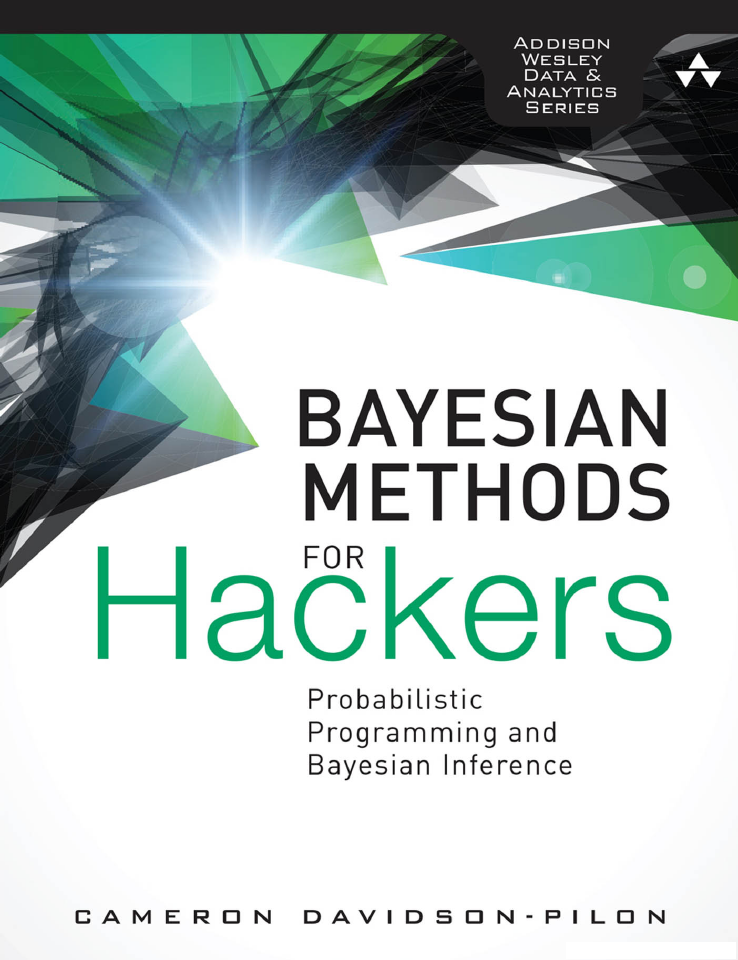
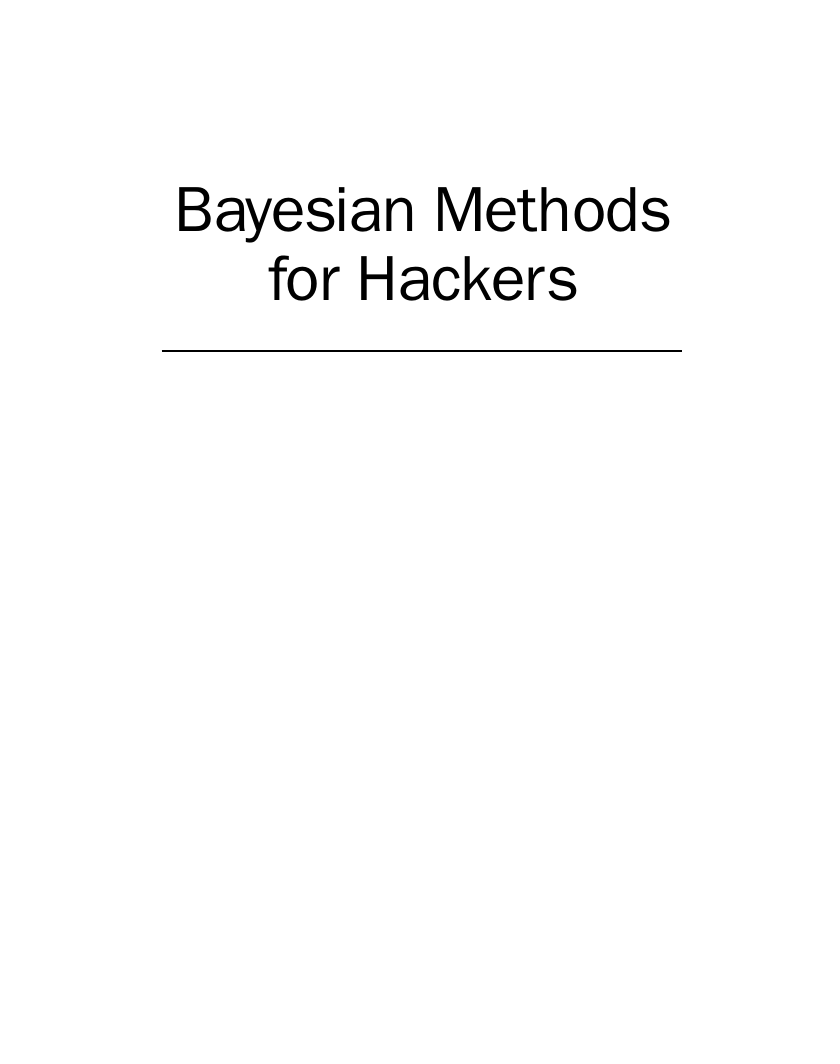
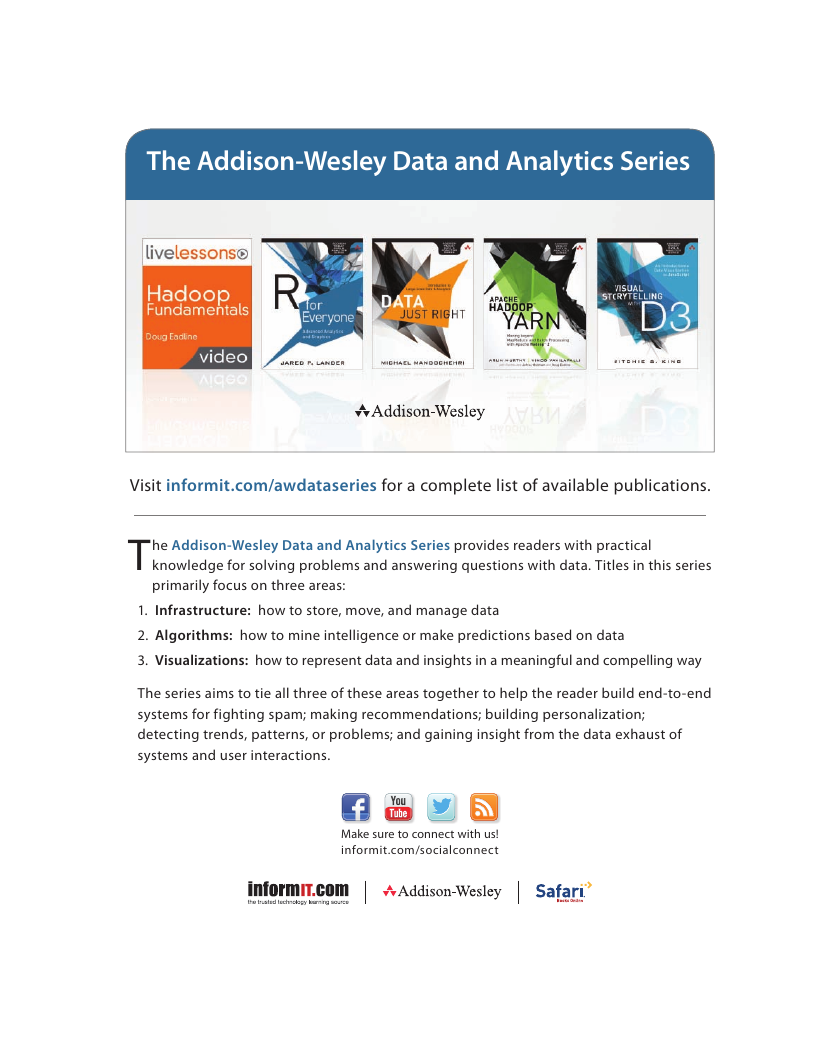
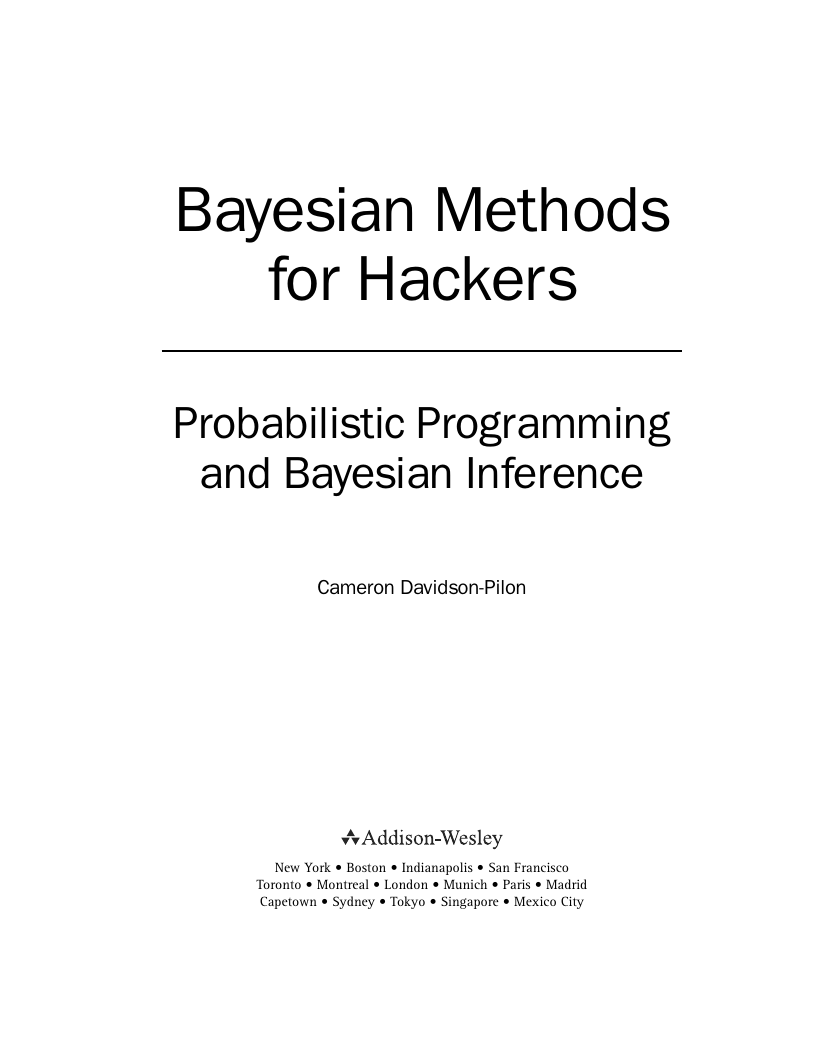
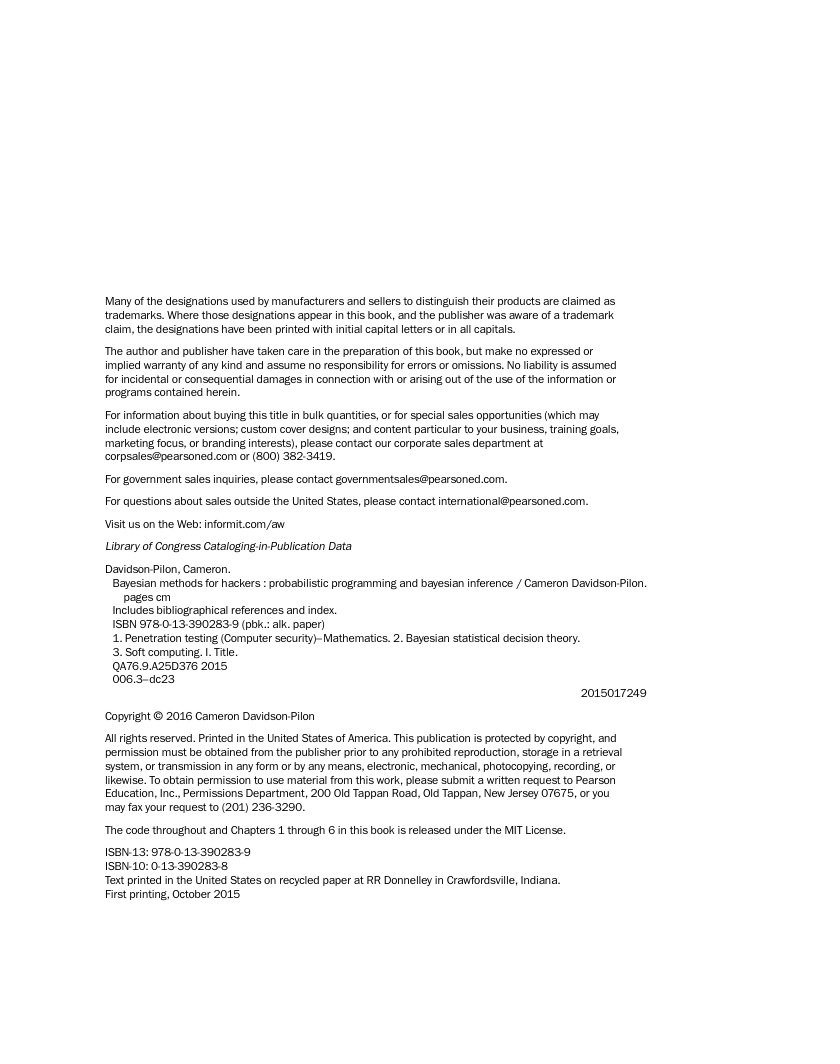


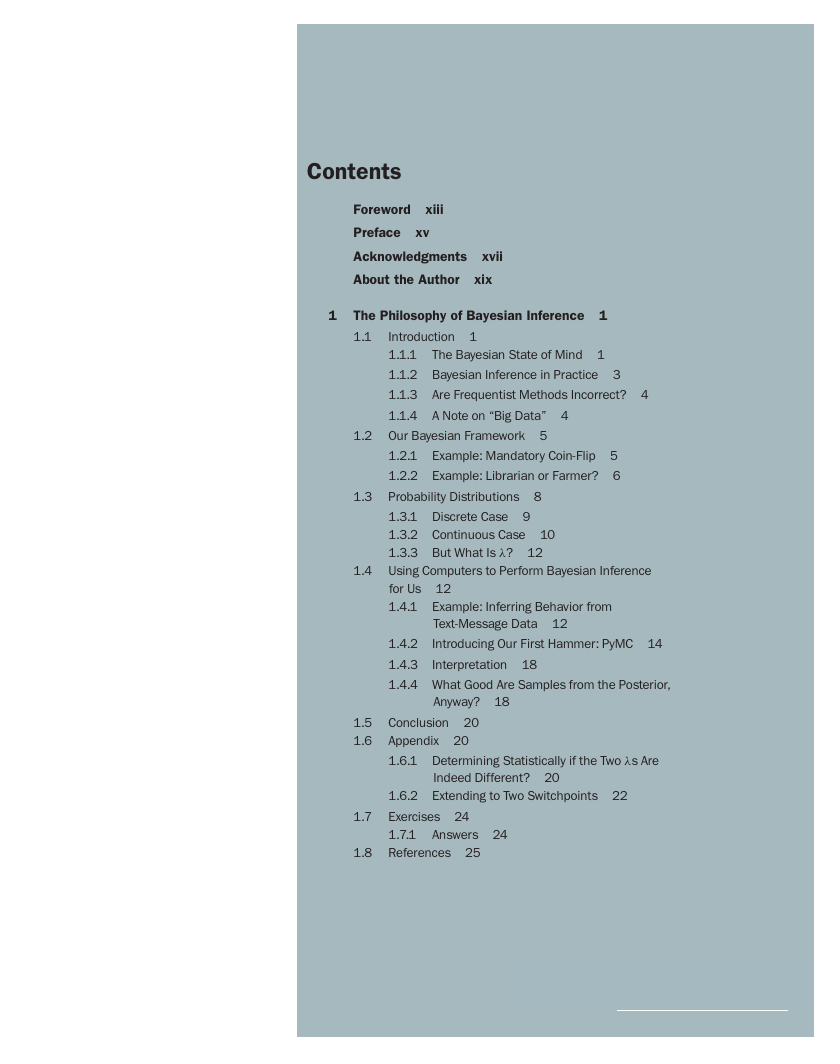








 2023年江西萍乡中考道德与法治真题及答案.doc
2023年江西萍乡中考道德与法治真题及答案.doc 2012年重庆南川中考生物真题及答案.doc
2012年重庆南川中考生物真题及答案.doc 2013年江西师范大学地理学综合及文艺理论基础考研真题.doc
2013年江西师范大学地理学综合及文艺理论基础考研真题.doc 2020年四川甘孜小升初语文真题及答案I卷.doc
2020年四川甘孜小升初语文真题及答案I卷.doc 2020年注册岩土工程师专业基础考试真题及答案.doc
2020年注册岩土工程师专业基础考试真题及答案.doc 2023-2024学年福建省厦门市九年级上学期数学月考试题及答案.doc
2023-2024学年福建省厦门市九年级上学期数学月考试题及答案.doc 2021-2022学年辽宁省沈阳市大东区九年级上学期语文期末试题及答案.doc
2021-2022学年辽宁省沈阳市大东区九年级上学期语文期末试题及答案.doc 2022-2023学年北京东城区初三第一学期物理期末试卷及答案.doc
2022-2023学年北京东城区初三第一学期物理期末试卷及答案.doc 2018上半年江西教师资格初中地理学科知识与教学能力真题及答案.doc
2018上半年江西教师资格初中地理学科知识与教学能力真题及答案.doc 2012年河北国家公务员申论考试真题及答案-省级.doc
2012年河北国家公务员申论考试真题及答案-省级.doc 2020-2021学年江苏省扬州市江都区邵樊片九年级上学期数学第一次质量检测试题及答案.doc
2020-2021学年江苏省扬州市江都区邵樊片九年级上学期数学第一次质量检测试题及答案.doc 2022下半年黑龙江教师资格证中学综合素质真题及答案.doc
2022下半年黑龙江教师资格证中学综合素质真题及答案.doc